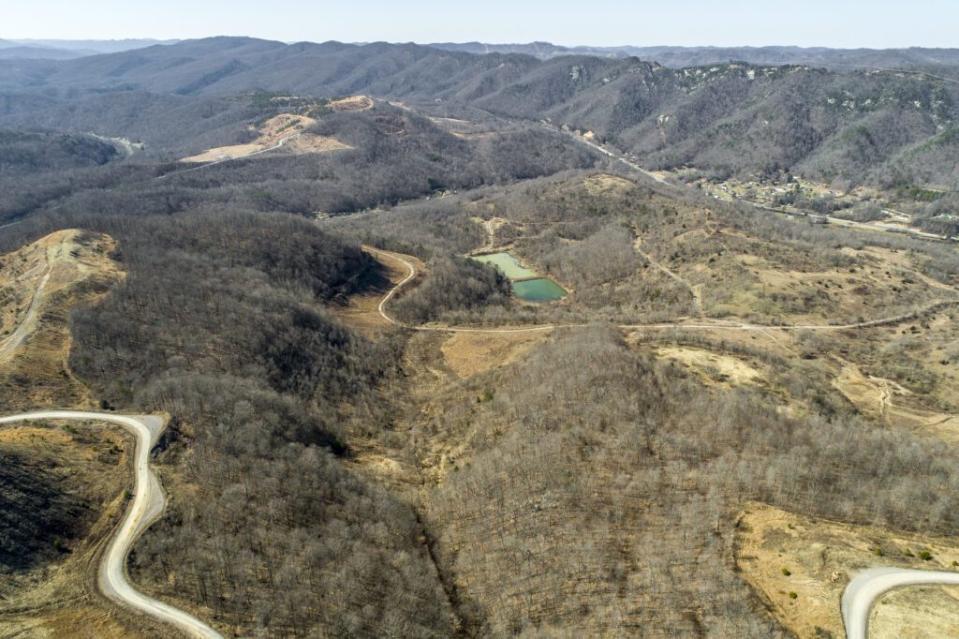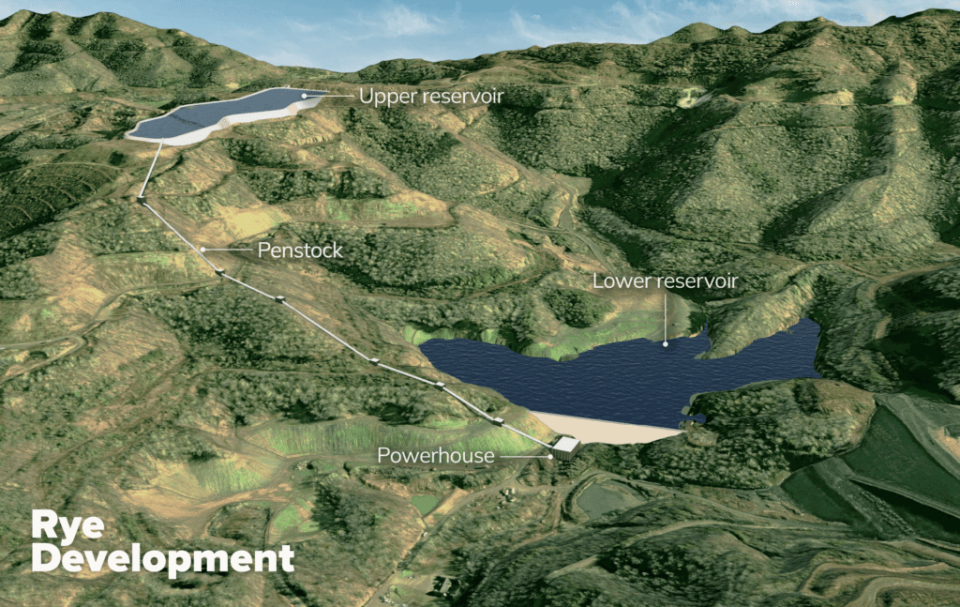The POWER Interview: Pumped Storage Project Brings Renewable Energy to Former Coal Mining Site
A pumped storage project in Kentucky is being touted as a model example of how land that once was the site of a coal mine can be repurposed for a renewable energy installation. The Lewis Ridge Pumped Storage Project, a closed-loop, 287-MW hydropower facility, is being constructed at a site where coal was mined beginning in the 1950s, according to local records. The location in Bell County, near the town of Pineville, is on private land primarily owned by Asher Land and Mineral. The U.S. Dept. of Energy (DOE) recently announced that Rye Development, which is overseeing the project, will receive $81 million to support the $1.3 billion installation. Officials said the project is among several pumped storage hydro (PSH) facilities in development in the U.S., while saying Lewis Ridge is notable for being built on land that once housed a coal mining operation. Energy analysts have told POWER pumped storage facilities offer a resilient source of electricity, particularly during extreme weather, which makes them a better investment as such events become more commonplace. [caption id="attachment_219158" align="alignnone" width="640"]

This land near Pineville, Kentucky, formerly the site of a coal mine, will be repurposed as the location of a pumped storage hydropower facility. Source: Rye Development[/caption] The DOE's Office of Clean Energy Demonstrations has announced financial support for a handful of projects, associated with different technologies, on former mining land across the U.S. The DOE in its "U.S. Hydropower Market Report 2023 Edition" said 96 PSH projects were in development at the end of 2022; there were 67 in development at the end of 2019. The DOE said the development pipeline has 91 GW of generation capacity. The agency said more than 80% of the proposed PSH projects have closed-loop configurations, which means their reservoirs are not continuously connected to a naturally flowing water feature. That allows for more siting flexibility, and usually lower environmental impacts on aquatic and terrestrial resources than open-loop facilities. The proposed storage durations are generally for eight to 12 hours, with Lewis Ridge in the eight-hour range. [caption id="attachment_219160" align="alignnone" width="640"]

This is a rendering of the Lewis Ridge Pumped Storage Project, a hydropower facility being built on the site of a former coal mining operation. Source: Rye Development[/caption] Kentucky Democratic Gov. Andy Beshear, at an event earlier this year to celebrate the project, said, "Congratulations to Rye Development and thank you to [Energy] Secretary Jennifer Granholm and the Department of Energy for supporting Kentucky as we continue to meet America's energy needs. We are so proud to support a project that builds on the region's strong energy-producing history while creating those 1,530 good jobs that will help power the next generation." "President Biden believes that the communities that have powered our nation for the past 100 years should power our nation for the next 100 years," said Granholm. "Thanks to the president's Investing in America agenda, DOE is helping deploy clean energy solutions on current and former mine land across the country—supporting jobs and economic development in the areas hit hardest by our evolving energy landscape." "This project is not only a significant investment in Kentucky; it's an investment in strengthening our national electricity grid, helping to secure our energy future," Paul Jacob, CEO of Rye Development. "The Lewis Ridge Pumped Storage Project will protect against blackouts and brownouts, while transforming a former mining site into a long-term economic engine for the region." Sandy Slayton, vice president of Rye Development, provided POWER with insight about the project, which is being built in a state long dependent on coal-fired power. Kentucky ranks seventh among U.S. states in terms of coal production, according to 2023 state data, and coal provides 76% of Kentucky's energy. That's the highest percentage of any state, according to the U.S. Energy Information Administration. POWER: What makes the Lewis Ridge project different from other U.S.-based pumped storage projects?Slayton: The Lewis Ridge Pumped Storage Project showcases the important role former mining lands have in strengthening our national electricity grid. When complete, it would be the first pumped storage hydropower facility in the U.S. built on former mining lands. With the capacity to store electricity for up to eight hours and generate enough electricity to power 67,000 homes, it will help ensure a continuous supply of power even during extreme weather events. [caption id="attachment_219157" align="alignright" width="215"]

Sandy Slayton[/caption] POWER: The project information says 1,500 construction jobs will be created; how many permanent jobs will be created for the facility when it enters commercial operation?Slayton: The project will create dozens of direct and indirect operational sustainable-wage jobs, including hydropower operators and site maintenance technicians. POWER: What was the name of the mine that was located at the site? Slayton: The project site is located in Bell County, Kentucky near the town of Pineville. The entire project boundary is on private lands primarily owned by Asher Land and Mineral. Five coal seams intersect the project area. The first records of coal mining are from the 1950s. Since that time, many mining operations have stopped and started; however, coal extraction has stopped within the project area. POWER: How much political support has there been for the project, in an area where coal mining has long been a part of the local economy, and in a state where some lawmakers have pushed to keep coal-fired power plants operating even as utilities oppose those efforts?Slayton: Rye Development is very grateful for the extensive support we've received from both Democrats and Republicans for the Lewis Ridge Pumped Storage Project. POWER: Are there other coal mining sites in Kentucky that could be (or are being) converted to renewable energy installations?Slayton: Currently, the Lewis Ridge Project is the only pumped storage facility in the U.S. being proposed on former mining lands. Rye Development is excited to bring pumped storage—the largest, most proven energy storage technology—to Kentucky, which has a long legacy of powering the nation. POWER: Who are some of the companies, such as contractors and equipment suppliers, involved with the Lewis Ridge project?Slayton: We have been working with many great partners to move the Lewis Ridge project forward. We are collaborating with Shaping Our Appalachian Region (SOAR) to attract and train a local workforce for what will be one of the largest infrastructure projects this region has seen in many years. Other key partners during this phase of the project include Kleinschmidt Associates, AECOM, Schnabel Engineering, RESPEC, and Argonne National Lab. —Darrell Proctor is a senior associate editor for POWER (@POWERmagazine).

 Yahoo Finance
Yahoo Finance 